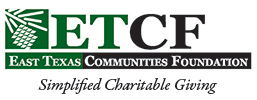In the nonprofit world, the return to normal fundraising and normal levels of services are also continuously postponed. Many nonprofits which were forced to cancel fundraising events in the spring of 2020, also had to cancel them again in the fall of 2020. Now I’m starting to receive cancellation notices for events that were scheduled for spring of 2021 as well. Nonprofit experts have been analyzing these fundraising trends and giving advice to nonprofits about how they should raise support in 2021. I thought it might be helpful to consider some of these suggestions from the donor perspective.
In an online article about 2021 fundraising strategies, nonprofit software company Virtuous suggested that nonprofits learned to listen better in 2020, and that will serve them well again in 2021. What that means for a donor is that your favorite charities may be reaching out to you to give you a chance to speak. Charities want to check in with you, find out how you are doing, and thank you for your support during these challenging times. When they reach out to you, they may also want your critical feedback on how best to continue communicating with you, how comfortable you are with regard to in-person events, and what you think about how the organization is dealing with current issues. As a donor, charities are genuinely interested in your thoughtful perspective.
The same article by Virtuous suggested that nonprofits, “Plan out your strategy, but do it with a pencil, not a pen.” As we return to in-person fundraising events, there will likely be some setbacks that continue to cause disruptions and cancellations. As a donor, let me urge you to not let cancellations frustrate you, but serve as a call to action for you. When your favorite charity is forced to reschedule an event, move it virtual or cancel it; use the opportunity to make your gift anyway. In fact, try to give more than you were planning if you can, to make up for those who cannot give again this year. As further proof that you can make lemonade out of lemons, add a note of encouragement to the executive director or staff, who may otherwise be discouraged by the change of plans.
Several articles suggested that nonprofits should focus on donor-retention and encourage monthly giving in 2021. As a donor, you can be on the lookout for the opportunity to make your annual contribution and/or initiate a monthly giving plan that will provide consistent support for your favorite organizations. (Donor Tip: Let me encourage you to avoid being the donor that requires three or four letters and reminders to renew your annual support.) The first week of every month, I tackle a stack of monthly distributions from ETCF donor-advised funds. The stack grows each year as our donors find value in spreading their support throughout the year in the form of monthly or quarterly grants.
Finally, several articles suggested that nonprofits embrace technology. Technology, including virtual events, virtual meetings and online giving are here to stay. The genie cannot be put back in the bottle. For some people, virtual meetings are essential because they face serious health risks or declining health. For others, the convenience of online participation allows them to join in the important work of local charities from anywhere in the world. Nonprofit organizations are encouraged to look at a hybrid model as the new normal; utilizing in-person and online opportunities for engaging donors, board members and volunteers. As a donor, board member or volunteer, you might consider investing in a good camera, microphone/headset and light, so you can be seen and heard clearly when you join your next virtual meeting.
It is hard to know when “normal” will return, but for 2021, nonprofits and donors alike can find ways to embrace the present challenges of the slow recovery as our next best opportunity to Give Well.
Source: 2021 Fundraising strategy articles from Virtuous, AFP, LAPA Fundraising, Classy, and Thompson & Associates.


Recent Comments